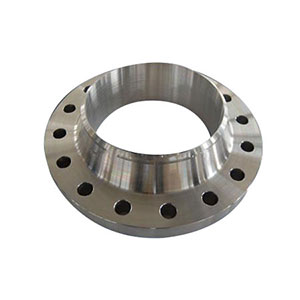Information about forged welded neck flanges
2023-10-16
A forged welded neck flange is a type of flange used in piping systems for connecting pipes, valves, or other equipment. It is known for its durability and strength, making it suitable for high-pressure and high-temperature applications. Here's some important information about forged welded neck flanges:
Design and Construction: Forged welded neck flanges are made from a solid piece of metal, typically carbon steel or stainless steel. The flange has a long tapered neck that extends from the main body and ends with a circular base. The base is welded to the pipe, providing a strong and secure connection.
Welding Process: The neck of the flange is welded to the pipe using various welding techniques, such as TIG (Tungsten Inert Gas) or MIG (Metal Inert Gas) welding. This welding process ensures a robust and leak-proof joint between the flange and the pipe.
Key Features:
1. Neck Design: The long neck of the flange provides reinforcement to the joint and reduces stress concentration, making it suitable for high-pressure applications.
2. Raised Face: The mating surface of the flange has a raised face, which helps create a tight seal when compressed against a gasket.
3. Bore Size: The bore size of the flange matches the inner diameter of the connected pipe, ensuring a smooth and uninterrupted flow of fluids or gases.
4. Pressure and Temperature Ratings: Forged welded neck flanges are designed to withstand high-pressure and high-temperature environments, making them suitable for demanding industrial applications.
5. Durability: The forging process used to create these flanges enhances their strength, durability, and resistance to deformation or cracking under extreme conditions.
Applications: Forged welded neck flanges are commonly used in industries such as oil and gas, petrochemical, power generation, and chemical processing. They are preferred in applications where high-pressure, high-temperature, or corrosive fluids or gases are involved.
Considerations:
1. Material Selection: The choice of material for the flange should be based on the specific application requirements, including the nature of the fluid or gas being transported, temperature, pressure, and corrosiveness.
2. Size and Dimensions: Flanges come in various sizes and pressure ratings. It's important to select the appropriate size and class to ensure compatibility and safety within the piping system.
3. Standards and Codes: Flanges should conform to relevant industry standards and codes, such as ASME (American Society of Mechanical Engineers) standards or international standards like ANSI (American National Standards Institute) or DIN (Deutsches Institut für Normung).
It is essential to follow proper installation procedures, including appropriate welding techniques and using compatible gaskets and fasteners, to ensure a secure and leak-free connection. Consulting with a qualified engineer or experienced professional can provide further guidance on selecting and installing forged welded neck flanges for specific applications.



